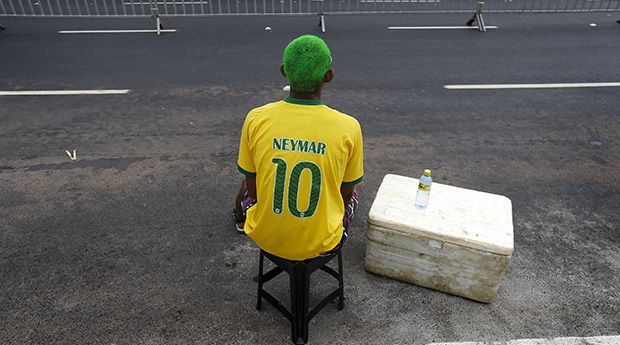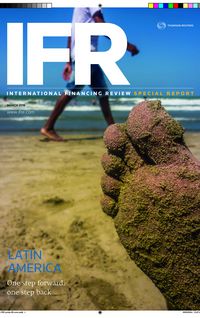Petrobras is heavily indebted and mired in scandal, so can the Brazilian bellwether extricate itself from its tricky position and restore both confidence and riches?
Rarely does a week goes by when Petrobras is not in the news, for reasons both good and bad.
On February 24, the giant Brazilian oil firm, plagued by low oil prices and mounting debts, and immersed in a politically-tinged corruption scandal, was handed the latest hit to its credit rating, this time from Moody’s, which downgraded its senior unsecured debt to B3 from Ba3.
A week earlier, Standard & Poor’s automatically lowered its standalone credit profile to b– from b+, after downgrading Brazil’s national scale rating to brA– from brAAA, citing rising concerns about the sovereign’s creditworthiness.
Even here though, a few glimmers of light have punctuated the gloom, often emanating from some unlikely sources.
On February 27, China Development Bank (CDB), Beijing’s largest policy lender, handed Petrobras a US$10bn loan that can be repaid in either cash or oil. The credit line echoes the cash-for-oil deals that China has struck in recent times with Venezuela. And on March 4, Brazilian authorities detained the country’s former president, Lula da Silva, on the suspicion of enriching himself and the ruling Worker’s Party, in return for granting Petrobras lucrative government contracts. Federal police said they were investigating “crimes of corruption and money laundering by a range of people in the criminal scheme uncovered and related to Petrobras”.
At first glance, this might appear yet another setback for the besieged company. Yet its US stock jumped 11.5% that day, while its Sao Paulo-listed securities rose 9.9%, a day after jumping 16.3%: a sign that investors see any development in the ongoing corruption scandal in a positive light.
“Investors are just keen to see the investigation over and done with, however financially bad the outcome,” said one Sao Paulo-based banker. “Any step in any direction for Petrobras is a good one. Right now, the company is living in limbo.”
Deep in debt
This is indeed a company suffering a strange kind of corporate existence. With US$130bn in total obligations to a variety of banks, bondholders and other creditors (84% of which is priced in foreign currencies), Petrobras is the world’s most indebted oil producer. It is also one of the most indebted non-financial firms, and the world’s largest non-investment-grade corporate issuer. It faces billions of dollars in maturities due for repayment for years to come. And its suffocating debt load has quintupled over the past five years; in 2016 and 2017 alone, it faces the need to meet US$24bn in debt obligations, a huge amount for a company that has not generated free cashflow in eight years and whose annual debt servicing costs have doubled in the past three years to R$20.2bn (US$5.4bn).
To meet all of its obligations, the company “would need to utilise existing cash, refinance its maturities or execute its ongoing asset sales plan – or a combination of them all”, said Renata Lotfi, a primary credit analyst at Standard & Poor’s. All three options, though, are differently and distinctly problematic. Petrobras had US$26.2bn in cash reserves at end-2015, according to company data, more than the likes of Chevron and ExxonMobil.
But in a February 25 report, financial information platform Bidness ETC said cashflow would remain “negative in the foreseeable future, given the weak performance of its upstream and downstream segments”. It noted that the firm’s exploration and production segment had “experienced a significant decline in revenue” due to the sharply lower price of crude.
Luciano Gremone, an analyst at Standard & Poor’s, described the situation as a perfect storm.
”We are talking about a highly leveraged company with a significant debt burden, a high capital expenditure programme still in place, and which will remain cashflow negative for years,” he said.
Heads I win, tails you lose
The loan from China’s CDB, meanwhile, will only go so far – and may turn out to be a mixed blessing. Petrobras rightly welcomed the cash with open arms. But this is not largesse on the part of the Chinese government. The two sides have been here before: in 2009, CDB handed Petrobras another resource-backed US$10bn loan, repayable in the form of 200,000 barrels of oil a day. This year’s credit line works the same way: if the price of oil falls further, the per-barrel size of the daily shipment will necessarily rise, as it has in Venezuela. If oil surges, Beijing can choose to be repaid in either cash or oil. Either way, China wins.
Divestment will likely prove equally tricky. Chief financial officer Ivan Monteiro has expressed his desire to raise US$15.1bn through asset sales, cash that would help Petrobras cut debt and prop up capital expenditure. Speculation is rife that the company might sell all or some of its Buenos Aires-based subsidiary, Petrobras Argentina, or reduce its share in the deepwater Libra field, believed to contain between 8bn and 12bn barrels of recoverable oil. Another possible divestment is the sale of all its electricity-sector assets.
But none of this will prove simple, and for several reasons.
First, a host of energy firms, major and minor, are seeking to shed assets in order to fill their own funding gaps. Finding the right buyer willing to pay the right price for the right non-core assets will prove tricky.
“The task facing Petrobras is very challenging, not just because of low oil prices and the divestment plans being undertaken by other major energy firms, but because of the country’s fragile sovereign environment and its weak currency,” said S&P’s Lotfi. “Under our base case scenario, we don’t [expect Petrobras to make] any asset sales.”
The best and increasingly the most likely outcome would be for leading Brazilian state-owned lenders, such as Banco do Brasil and Caixa Economica Federal, to convert R$87bn of loans to Petrobras into equity. That would cut the firm’s debt load, ease concerns among foreign holders of its bonds and stocks, and allow executives to begin to plan for the future.
Rumours of a loan-to-equity swap emerged in February, at roughly the same time that Brazilian officials made it quietly known that they would, as a means of last resort, consider a state-backed financial lifeline. Petrobras may well, said Neil Shearing, chief emerging markets economist at London-based Capital Economics, “have become a metaphor for everything that has gone wrong in Brazil”.
It borrowed too much in its golden years (the company conducted the largest share sale in history in September 2010, raising US$72.8bn on the BM&F Bovespa stock exchange), but wound up indebted and overleveraged as winter set in. Its stock has been on a long downward trajectory since peaking at north of R$50 in May 2008; by the last trading session of February 2016, those shares, once prized by investors, were trading at R$5.14.
Yet it is worth remembering for a moment how vital this corporate is to the government and to the broader economy. A good slice of last year’s lost economic activity (Brazilian GDP contracted by 3.8% in 2015) can be explained by a sharp fall-off in spending and investment by Petrobras.
In January, CFO Monteiro said he would cut capital spending over the five years to end-2020 by 25%, to US$98.4bn – good for investors; bad for the struggling economy. As Petrobras goes, it might be said, so goes Brazil.
That explains why words such as ‘bankrupt’ and ‘insolvency’ are so rarely muttered, even last spring, when Petrobras posted its 2014 financials at virtually the last possible moment, narrowly avoiding a technical default. However bad life gets for Brazil’s largest company by revenues and assets, analysts and investors of every stripe expect the government, if the company’s financial existence is threatened, to intercede.
“The way we view Petrobras is that we look at its standalone credit profile, then we look at its extraordinary sovereign support,” said S&P’s Lotfi. “We believe there is a very high likelihood that the government would support the company at a time of deep distress. The strong reputational link between company and sovereign ensure that a default by Petrobras would exert serious systemic impact on the sovereign.”
And that works both ways. Every time Brazil’s sovereign rating is downgraded, Petrobras suffers a similar fate. S&P’s negative outlook on Brazil’s economy, due to its perceived lack of credit worthiness, gives the country a “one in three chance of a downgrade”. Fall two more rungs down the ladder, and Petrobras will be ranked CCC and in highly slippery territory. Little wonder government and corporate are desperate to draw a line under the corruption scandal.
If that happens, absent of the need to weaken the firm by hiving off core assets at a pittance, Petrobras should face a brighter future. It is not a badly run company: investors have been largely impressed by the actions of CFO Monteiro and chief executive officer Aldemir Bendine, who have, since being appointed in early 2015 “taken steps to improve liquidity, and to ensure that the firm is focused less on the perception of growth and more on profitability”, said S&P’s Gremone. “It remains a company with good fundamentals whose cash reserves rate very well, and it should maintain a dominant long-term position in a very large economy.”
Petrobras’ situation may look dire; its finances hellish. But it was Winston Churchill who liked to say that when going through hell, the best course of action was to keep going. Company executives would do well to remember his words.
To see the digital version of this special report, please click here
To purchase printed copies or a PDF of this report, please email gloria.balbastro@thomsonreuters.com



